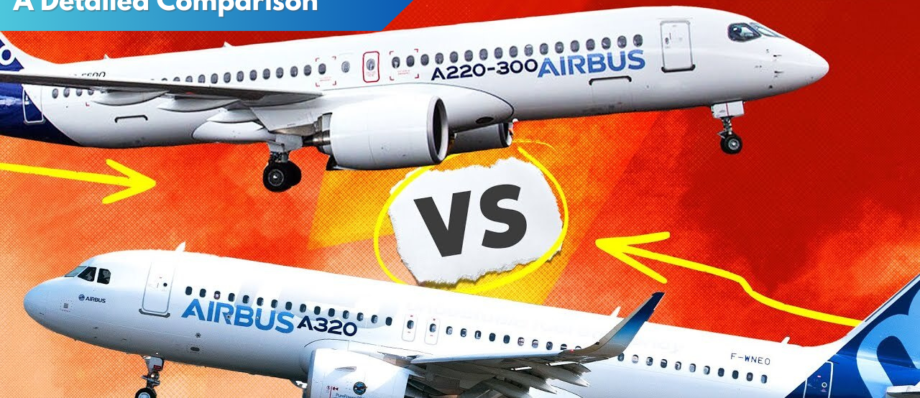Airbus A320neo vs A220-300: A Detailed Comparison
In the world of modern aviation, the demand for fuel-efficient and technologically advanced aircraft is ever-increasing. Airlines are constantly seeking models that offer the best performance with minimal environmental impact. Two contenders that have captured significant attention in this regard are the Airbus A320neo and the A220-300. Both aircraft serve the narrow-body market but come with distinct features and advancements that set them apart. This article provides a detailed comparison between the Airbus A320neo and the A220-300, focusing on their performance, innovations, efficiency, and unique features.
Airbus A320neo: Performance and Innovations

The Airbus A320neo (New Engine Option) represents a significant leap forward in the evolution of the A320 family. This aircraft is renowned for its enhanced performance, primarily driven by its new-generation engines: the Pratt & Whitney PW1100G-JM and the CFM International LEAP-1A. These engines provide up to 15% fuel savings compared to previous models, making it an attractive option for airlines focused on reducing operational costs and environmental impact. The A320neo’s extended range, capable of flying up to 6,300 km, allows airlines to operate more long-haul routes with greater efficiency.
In addition to its improved engine technology, the A320neo incorporates several aerodynamic refinements. One notable innovation is the “Sharklets,” which are wingtip devices that further enhance the aircraft’s fuel efficiency by reducing aerodynamic drag. These improvements collectively contribute to reduced carbon emissions and quieter operations, aligning with global sustainability goals. The A320neo’s cabin has also been upgraded to enhance passenger experience, offering more space, comfort, and advanced in-flight entertainment options.
The A320neo’s success is also attributed to its flexibility and adaptability in airline operations. With a maximum seating capacity of 195 passengers, it can be configured to suit various market demands, from high-density short-haul routes to medium-haul international flights. Furthermore, the A320neo’s compatibility with existing A320 infrastructure allows airlines to seamlessly integrate it into their fleets without significant additional investment. This versatility and efficiency make the A320neo a preferred choice for many airlines worldwide.
A220-300: Efficiency and Unique Features

The A220-300, originally developed by Bombardier as the CSeries, has carved out its own niche in the aviation market with its exceptional efficiency and unique features. A major draw for the A220-300 is its advanced aerodynamics and the use of lightweight composite materials, which contribute to its superior fuel efficiency. The aircraft’s Pratt & Whitney PW1500G geared turbofan engines further enhance its performance, offering up to 20% better fuel efficiency compared to older aircraft of similar size.
The A220-300 sets itself apart with a spacious and modern cabin design, prioritizing passenger comfort. The aircraft features wider seats and larger windows, offering a more pleasant travel experience. Furthermore, its quieter engines result in a significant reduction in noise pollution, both inside the cabin and for communities below flight paths. This focus on passenger comfort and environmental sustainability makes the A220-300 a compelling option for airlines seeking to enhance their service offerings while being mindful of their ecological footprint.
With a range of up to 6,297 km, the A220-300 is particularly well-suited for regional and medium-haul routes, providing airlines with the flexibility to connect secondary cities with major hubs efficiently. Its smaller size compared to the A320neo allows it to serve niche markets and airports with shorter runways or limited infrastructure. The A220-300’s balance of efficiency, passenger comfort, and operational versatility makes it an appealing choice for airlines looking to expand their networks while managing costs effectively.
Both the Airbus A320neo and the A220-300 exemplify the advancements in modern aviation technology, offering distinct advantages that cater to different operational needs. While the A320neo provides a robust solution with its range and adaptability, the A220-300 shines with its efficiency and passenger-focused design. Airlines must weigh these factors based on their market requirements and strategic goals. Ultimately, the choice between these two aircraft will depend on an airline’s specific operational needs and the routes they aim to serve, but both models promise to deliver significant benefits in terms of performance, efficiency, and environmental impact.



